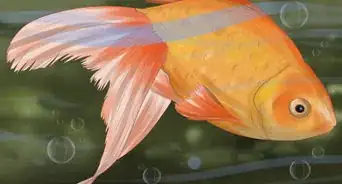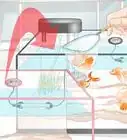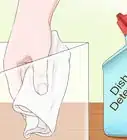This article was co-authored by Pippa Elliott, MRCVS. Dr. Elliott, BVMS, MRCVS is a veterinarian with over 30 years of experience in veterinary surgery and companion animal practice. She graduated from the University of Glasgow in 1987 with a degree in veterinary medicine and surgery. She has worked at the same animal clinic in her hometown for over 20 years.
There are 20 references cited in this article, which can be found at the bottom of the page.
This article has been viewed 76,668 times.
Flukes are parasites that attach themselves to the body and gills of goldfish. This parasite is one of the most common in goldfish, but if left untreated, flukes can infect your entire aquarium and quickly kill every goldfish in your tank.[1] Fortunately, there are plenty of options for helping your fish recover from a fluke infestation.
Steps
Identifying Flukes and Planning a Solution
-
1Look for symptoms your fish may have flukes. There are two kinds of flukes, gill flukes and body flukes.
- Symptoms of body flukes include an excessive layer of slime on the body; isolation; clamped fins (fins laying flush against the body); scratching and flashing (rubbing its flank against the side of the tank, plants, or decorative tank objects); gills or fins which appear to have been eaten away; sores and ulcers as the result of the scratching. [2]
- Symptoms of gill flukes include gasping at the surface, irritation of the gills, gills covered in mucous, and visible irritation to the gil
-
2Examine your goldfish for signs of flukes. Take a small scraping from the sick goldfish and examine it under a microscope.[3]
- To take a skin scraping, pick the fish up gently out of the water with a sock net. Hold the fish against the side of its bowl or tank. In your other hand, hold the slide at a 45 degree angle and press it down on the fish gently, pulling from the shoulder towards the tail. Always pull with the direction of the scales, never against, as this may hurt the fish. You should end up with some clear or opaque mucous on your slide. Once you have a sample, place a drop of water from the bowl or tank on top of the mucus. Place a cover slip over the slide. Examine your sample within the hour.[4]
- Take multiple samples to ensure there are no flukes present.
- You could detect flukes with a good magnifying glass, but the best way to see flukes is with a microscope at magnification of x40. Look for a translucent, ghostlike body moving about on the slide. Flukes have an elongated body with a rounded “head” and taper down to a pointed opisthohaptor (the organ it uses to latch onto the unsuspecting fish). You may see small hooks protruding from the fluke's opisthohaptor. Depending on the species of fluke, they may or may not have eyespots. They are also extremely active; look for rapid elongation and contraction of the body.
Advertisement -
3Use process of elimination to test for the existence of flukes. Raise the goldfish tank water to 70-78 degrees Fahrenheit and treat the water with an aquarium salt solution and Dimilin, Program, or a similar insect development inhibitor. Both Dimilin and Program utilize diflubenzuron to prevent the development of flukes and are nontoxic to filters, fish, and plants.
- Apply the mixture at a ratio of one gram per thousand gallons of water. Mix the solution well to speed its dissolution in the water.
- Aquarium salt will treat over seven known pathogens, and Dimilin or Program will eliminate all parasites except the fluke. With these other options rules out, you can safely conclude that your goldfish are suffering an infestation of flukes.[5]
-
4Consult your veterinarian. Your vet will have more comprehensive info about what to look for in potential fluke infestations, and can prescribe medication suited to your goldfish's condition. Make careful observations regarding your goldfish's behavior and appearance, and communicate them to your vet so he or she can make an informed decision about how to treat your fish.
Considering Treatment Options
-
1Make a quarantine tank. A quarantine tank is a special tank where you can isolate a fish suffering from flukes and apply baths, dips, and special treatments to it without treating your unaffected fish. If you have live plants in your tank, you can administer treatments in the quarantine tank without risk of harming them, too.[6]
- A simple quarantine tank requires little more than a tank with a heater and a sponge filter.[7] You can add some water from the main tank into the quarantine tank to afford stressing the fish. Water from the top of the aquarium works best. Find a tank that has a dark bottom; if the tank is clear, place it on a dark mat or table. You could also add some artificial plants to give the fish something to interact with.[8]
- Ensure your quarantine tank is well-aerated, since the treatments applied often consume oxygen in the tank. Use an oxygen pump to ensure the tank receives a steady flow of oxygen. Over-oxygenating the tank is nearly impossible; unless your fish is wary of venturing near the bubbling area, or your pump is causing the tank to vibrate from the force of expelled oxygen, you are not adding too much to the tank.
- Unless otherwise noted, the following treatments all require isolating the affected fish in a treatment tank.
-
2Utilize formalin (37% concentration) as a dip. Formalin is a disinfectant used to kill microorganisms or preserve biological tissues.
- If employing Formalin-MS (a common formalin solution), use 20 drops per gallon of water (or 1 teaspoon per 9 gallons). Dip fish for up to fifty minutes. Remove fish from the tank if it shows signs of distress.
- Formalin can be used in quarantine tanks or in the main tank.
- A quarantine tank solution will contain 20-25 parts formalin per million parts of water. Depending on severity of the infestation, dip your fish in the quarantine tank for 12-24 hours. Remove fish after dip is complete and rinse in clean water. Return fish to its main tank. Repeat twice in three-day intervals.
- Formalin can be employed in the main goldfish tank as well as in quarantine tanks. However, when treating the whole tank with formalin as opposed to a quarantine tank, you must use a lower concentration. Mix 2 drops of Formalin-MS per gallon of water. Perform a 25% water change after 3 days and replace your filtration unit. Repeat two times, once every three days.
-
3Use Methylene Blue to kill the flukes. A chemical compound with many uses, Methylene Blue constitutes an effective treatment against flukes by staining cells and disabling their metabolism. [9] A dip regimen utilizing Methylene Blue calls for a mixture of 12 mg of MB per liter of water. This solution will treat a saltwater fish for up to one hour and a freshwater fish for up to 10 minutes. A dip can be as high as 50 mg/l for duration of 10 seconds. After dipping, return the fish to its tank or bowl. Do not keep it beyond the required period in the MB solution.
- Do not use Methylene Blue in your main tank with the biological filter. It will destroy the bacteria living within the filter.
-
4Use salt baths to kill the flukes. Mix 30-35 grams of salt per liter of water. Use specialty aquarium salts designed for use in aquariums; these are readily available at pet stores. Dip the fish in the bath for 4-5 minutes. Repeat daily for three treatments. Change 30-70 % of the water between treatments.
- While common, this treatment is not always effective. Flukes lodged beneath the fish's skin may be protected by the fish's own mucous membrane.[10]
-
5Use acetic acid to eliminate the flukes. Mix a solution composed of one part acetic acid with 400-500 parts water. Dip the fish in the solution for 40-60 seconds before returning it to its main tank. Repeat the dip one week later.[11]
- This is one of the few treatments which does not require 3-4 treatment sessions.
-
6Apply praziquantel treatments. There are a number of options for treating flukes which employ some form of praziquantel, a medication used to treat parasites in dogs and cats as well as fish.[12] It is an expensive treatment but is the least harmful to your goldfish and other creatures living in your aquarium, including plants. Praziquantel is available commercially in most pet stores.[13] Dip fish in the mixture for 3-6 hours, then remove it back to its main tank. Repeat the treatment two more times, once every three days. Change 30-70% of the tank water before each subsequent treatment.[14]
- Praziquantel is the best option to treat flukes in goldfish. Mix 5-10 mg of Praziquantel per liter of water.
- Praziquantel may also be dosed in the fish feed. Apply 5 mg per kg of goldfish.
- Your veterinarian could inject Praziquantel directly into your fish. Ask your vet if this option is right for your fish.
- There are a multitude of medicines suitable for fluke-infested fish whose active ingredient is praziquantel. Prazipro Fluke tabs are a popular option, as is Droncit.[15] Other praziquantel treatments include Lifeguard, Tetra Parasite Guard, and Fungus Guard.[16] All are available at pet stores.
-
7Try an antibacterial and anti-parasitic medicine. Acriflavine-MS is an effective anti-parasitic treatment designed for use in aquatic environments. Mix 1 teaspoon per 10 gallons of water. Utilize daily until the infestation is gone. Treat daily after changing 25%-50% of tank water. Adjust your dose to match the volume of exchanged water. For instance, if you have ten gallons of water and remove 50%, add a full spoonful of Acriflavine to the tank, then refill the tank to its maximum ten gallon capacity.
- Acriflavine is also known as eufavine, gonacrine, neutroflavine, and trypaflavine.
-
8Try organophosphates (OPs). OPs work against flukes by disrupting their nervous systems. These compounds are potentially toxic to fish and must be used with caution.
- Trichlorfon is the most common OP used to treat fish. Recommended dosages depend on the tank temperature. For temperatures above 27o C add 0.25 mg per liter of water. For temperatures below 27o C add 0.50 mg per liter of water.
- Another option is to mix Trichlorfon with water in a ratio of 0.25-1.0 parts per million. Dip fish in the mixture for one hour. Repeat daily for three days. Change 30-70% of the water between treatments and adjust the Trichlorfon level as needed. [17]
Preventing Future Outbreaks
-
1Repeat your selected method of treatment. No matter how you choose to treat your fluke outbreak, repeat your selected method at least 3-4 times (unless directed otherwise). For instance, if you choose salt baths, apply the baths 3-4 times. Several generations of fluke larvae can live inside the mother flukes, so repeated applications of the treatment are necessary.
- Four days after the final treatment, you may once again begin performing routine water changes.
-
2Treat the goldfish tank. Use any treatment method you desire at least once following the reintroduction of the afflicted fish back into its main tank. Then, remove all the water from the tank and let it dry. If you have been treating your fish in quarantine tanks or using dips rather than changing the water in your primary tank, you will need to clean those tanks to ensure the flukes are gone as well.
- Assuming you opted to treat the whole tank, your biological filter should be free of flukes. If you did not, use a praziquantel treatment on the filter for the prescribed period. If you are less cautious, you could choose to just rinse the filter well with dechlorinated water.
-
3Confirm the absence of flukes. After the treatment is complete, take another set of scrapings from your goldfish and examine them beneath the microscope. If you do not see flukes, your little fish friend is in the clear.
- Even if you don't see flukes, remain vigilant. They may have been reduced to a level you cannot detect. Pay attention in the weeks ahead to the behavior of your fish which may indicate they have returned.
-
4Check new fish for flukes. When introducing new fish into the tank, check for flukes by taking a scraping and checking it under the microscope. Even where you do not detect flukes, keep them in quarantine for at least a month before letting them join their friends in the main tank.
- Avoid adding new goldfish once you verify all the fish in a given tank are healthy. Recent research suggests that a closed community of goldfish will actually develop an immunity to flukes.[18]
-
5Keep your water clean. Flukes can be caused by poor water conditions. Check your water with test strips or kits (readily available at your local pet store) regularly. A good test kit will measure for water pH, salinity, alkalinity, nitrites, and oxygen levels. Water with high levels of ammonia is especially toxic. Invest in a quality biological filtration system to ensure water is clean and properly aerated. Change the water in your fish tank regularly to reduce incidence of fluke outbreaks.[19] Perform a 25% water change (at least) each week.
-
6Manage your goldfish population. Do not keep fish in congested conditions. Overcrowding is a leading cause of fluke infestations. Allow plenty of room for fish to swim naturally, grow, and breed. Limiting the number of goldfish per tank will also keep tank conditions more sanitary.
- A single goldfish requires 20-30 gallons of water depending on its particular species.
-
7Keep other aquatic species out. Do not populate your goldfish tank with snails or aquatic creatures who may serve as intermediate hosts. Similarly, do not feed your goldfish any live food sourced from waters in which flukes may reside.[20]
Warnings
- Goldfish flukes treatments can be expensive and potentially harmful to goldfish; it's important to accurately diagnose the existence of flukes before treating for flukes.⧼thumbs_response⧽
- Total fluke eradication is often difficult or impossible. Gill flukes, in particular, tend to be tenacious.⧼thumbs_response⧽
- In general, do not mix treatment options. Use only one at a time. If one does not work, try another after waiting about one week.⧼thumbs_response⧽
- If your fish ever shows signs of distress such as gasping for air at the top of the tank, or if it ceases swimming, remove it from the treatment tank immediately.⧼thumbs_response⧽
- Always follow treatment directions carefully. Many fluke treatments can be poisonous to your fish if administered incorrectly, especially malachite green, formalin, potassium permanganate, and salt dips.[21]⧼thumbs_response⧽
Things You'll Need
- a clean fish tank
- a set of measuring spoons
- net
- thermometer
- a clock or timer
- a microscope
- a set of microscope slides
- medicine(s) of your choice
References
- ↑ http://www.caringpets.org/how-to-take-care-of-a-goldfish/cure-flukes/
- ↑ http://www.kokosgoldfish.com/Body%20And%20Gill%20Flukes.html
- ↑ http://www.caringpets.org/how-to-take-care-of-a-goldfish/cure-flukes/
- ↑ http://www.koihealth.info/skin-scrapes.html
- ↑ http://www.caringpets.org/how-to-take-care-of-a-goldfish/cure-flukes/
- ↑ https://www.csh.rit.edu/~tonyl/goldfish/testarea/hospital.htm
- ↑ http://www.exoticpetvet.net/aqua/parasites.html
- ↑ https://www.csh.rit.edu/~tonyl/goldfish/testarea/hospital.htm
- ↑ http://www.algone.com/aquarium-fish-dips-and-baths
- ↑ http://fishprofiles.com/profiles/diseases/Fluke/100020/
- ↑ http://www.about-goldfish.com/goldfish-flukes.html
- ↑ http://www.webmd.com/drugs/2/drug-8873/praziquantel-oral/details
- ↑ http://www.exoticpetvet.net/aqua/parasites.html
- ↑ http://www.exoticpetvet.net/aqua/parasites.html
- ↑ http://howtotakecareofgoldfish.com/how-to-diagnose-and-cure-flukes-in-goldfish/
- ↑ http://www.tetra-fish.com/aquarium-information/aquarium-fish-diseases-how-to-spot-them.aspx
- ↑ http://www.exoticpetvet.net/aqua/parasites.html
- ↑ http://www.kokosgoldfish.com/Body%20And%20Gill%20Flukes.html
- ↑ http://howtotakecareofgoldfish.com/how-to-diagnose-and-cure-flukes-in-goldfish/
- ↑ Craig Harms. “Treatments for Parasitic Diseases of Aquarium and Ornamental Fish.” Seminars in Avian and Exotic Pet Medicine, Vol 5, No 2 (April), 1996: 56.
- ↑ http://www.thekoikeepers.com/medicine/medicines.html
- Johnson, Erik DR., and Richard Hess. Fancy Goldfish: A Complete Guide to Care and Collecting. Boston, MA. 2001.
- Brewster, Bernice. An Essential Guide to Keeping Goldfish. Surrey, ENG. 2003.
- Boruchowitz, David. Aquarium Care of Goldfish. Neptune City, NJ. 2008.
- http://www.caringpets.org/how-to-take-care-of-a-goldfish/bath-treatments-for-sick-goldfish/
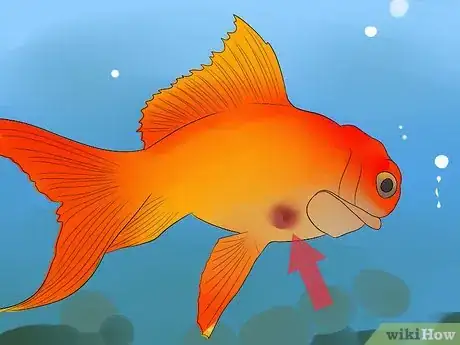


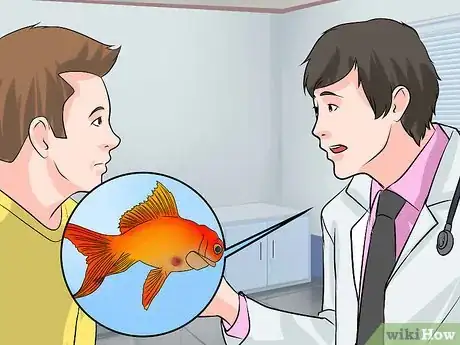
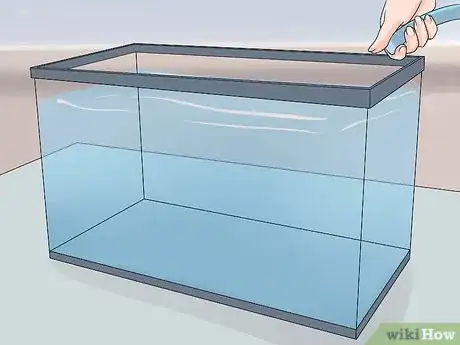
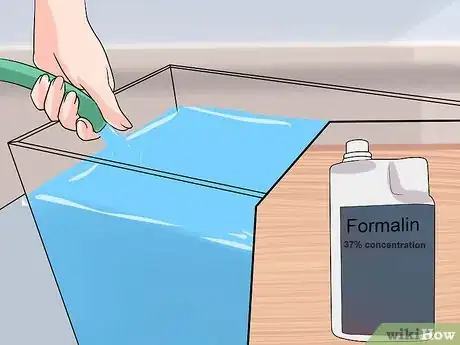

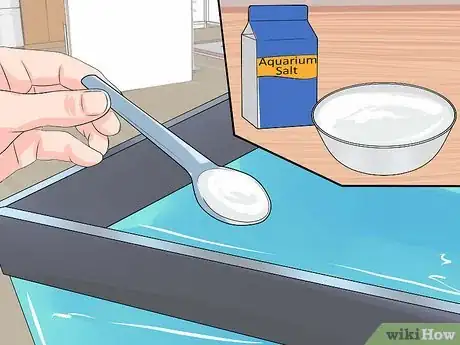
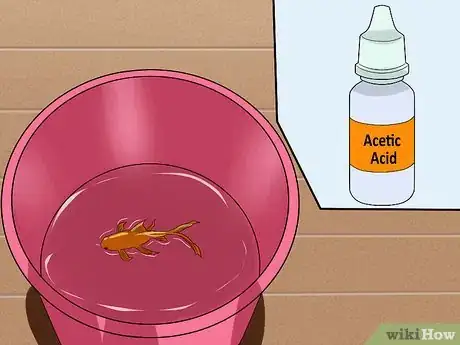
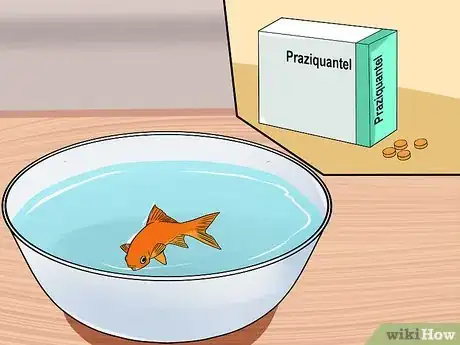

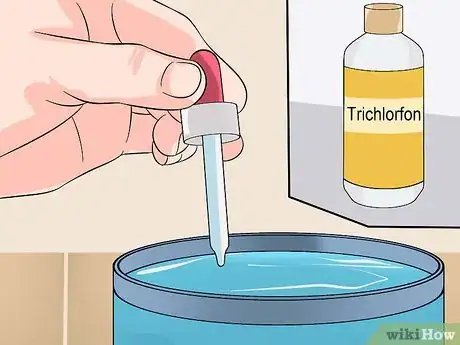
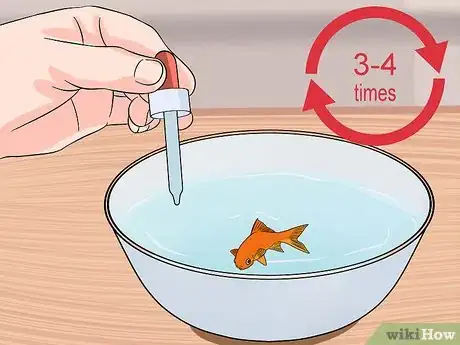

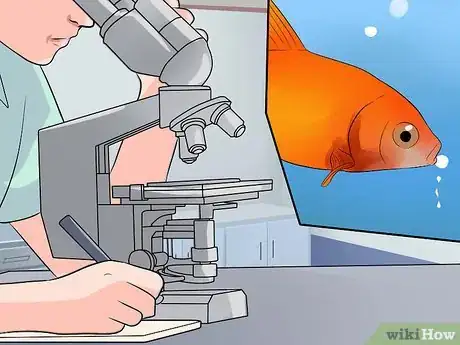
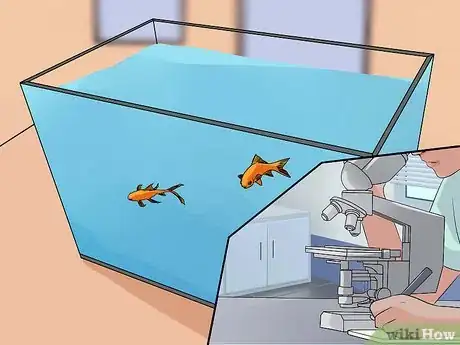
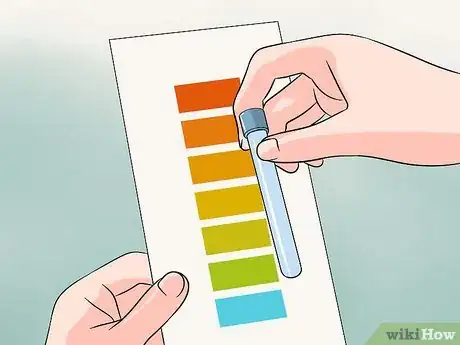
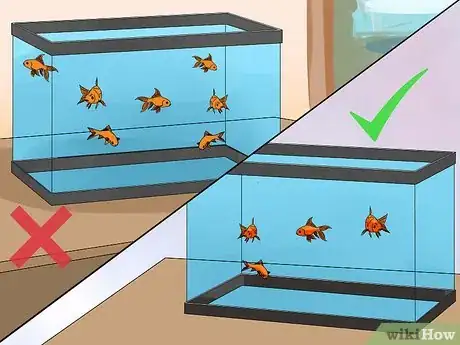
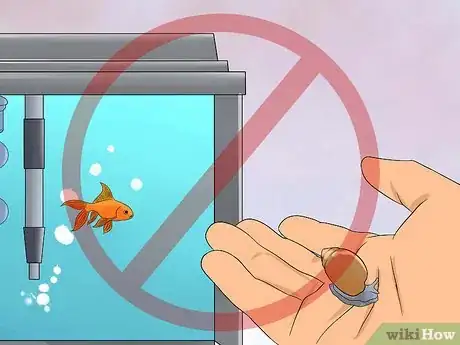
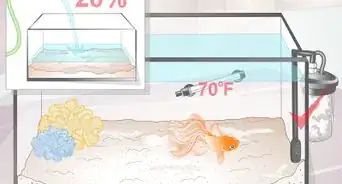
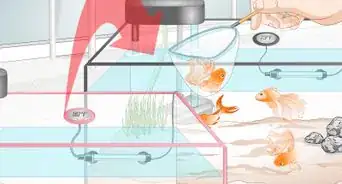
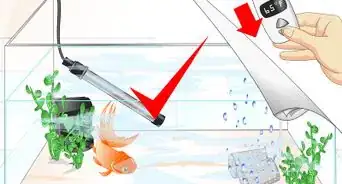
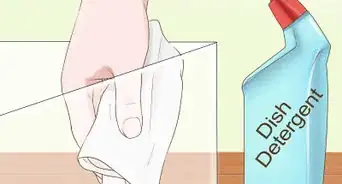


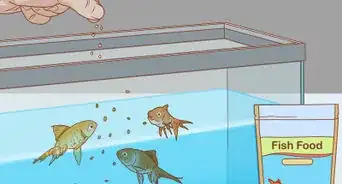
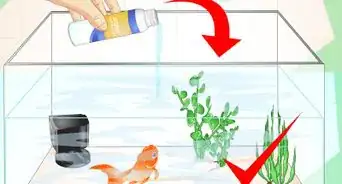
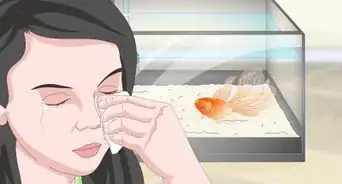
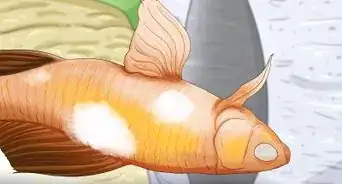
-Step-16.webp)

